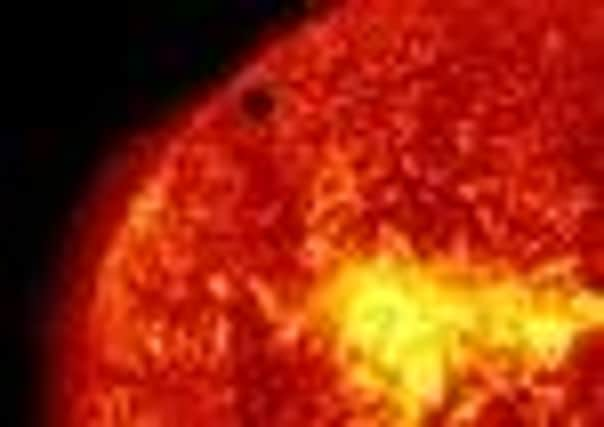In pictures: Transit of Venus watched by world


Thousands of people turned skywards yesterday morning to see the transit of Venus, an enchanting planetary journey that will not be witnessed again for more than a century.
As enthusiasts around the world watched the moment Venus turned into a tiny beauty spot eking its way across the face of the Sun, clouds thwarted most of those who rose early to see the wonder from Scotland.
Advertisement
Hide AdAdvertisement
Hide AdAbout 120 people gathered overnight in the grounds of the University of Glasgow. After it became clear the gloomy weather was refusing to lift, about 60 remained for the duration.
Martin Hendry, professor of gravitational astrophysics and cosmology at the university, was part of the hardy bunch who relied on video feeds from his collaborators in Perth, Australia, and Vancouver to see the transit.
“It sounds corny, but it did feel as if we were part of a global village of astronomy enthusiasts,” he said. “Our view was totally obscured. We had high hopes at around 4:30am when the sky was lightening as dawn broke, but it was a little too murky.
“When you’re in Scotland, you have to accept that your chances of naked-eye observing are severely limited by the weather and I’m still glad we went ahead, a good time was had by all.”
Scots stargazers abroad, however, enjoyed clearer skies, with one Aberdeen photographer, based in Germany, able to capture the transit for posterity in a series of striking images.
Phil Hart, 35, intended to take pictures from his base in Stuttgart but cloudy conditions made him drive 300 miles to Leipzig, arriving just before dawn in time to take pictures from the Monument to the Battle of Nations.
Further afield, throngs of people packed Mount Hollywood in Los Angeles, while hundreds massed at New Delhi’s planetarium. International Space Station astronaut Don Pettit took photos and posted them online.
It was the seventh transit visible since German astronomer Johannes Kepler predicted the phenomenon in the 17th century. The next is not due until 2117.